Last updated on December 14, 2023
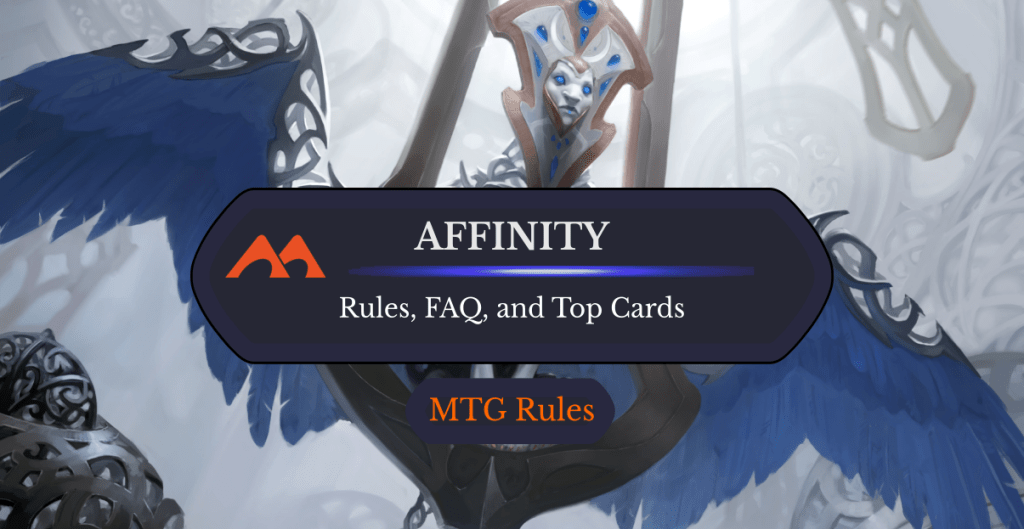
Ethersworn Sphinx | Illustration by Irina Nordsol
Affinity is one of those mechanics that teach us about the game and its balancing. It totally dominated in tournaments, to the point that several cards were banned in various formats along with metalcraft.
It's also the keyword for cost reduction in cards. A card that “costs 1 less for each creature you control” is said to have “affinity for creatures.” With The Brothers’ War on the horizon, a set that will be artifact themed, it’s a good time to remember affinity.
What’s affinity? What are the rules around it? Which are the best cards? Let’s dive into one of the game’s most iconic (and also maligned) mechanics and find out!
How Does Affinity Work?

Thoughtcast (Mirrodin) | Illustration by Greg Hildebrandt
Affinity for X makes it so that a spell with the mechanic costs one less to cast for each other X card you have in play when you’re casting the spell. The first affinity cards were affinity for artifacts, so it’s easy to forget that other affinities exist (for lands, creatures, and more). It’s interesting to see that most cards with affinity are artifacts that don’t have colored mana in their mana costs, which means that you can effectively cast a spell with affinity for free.
Affinity is a cost reduction mechanic that incentivizes you to play lots of cheap artifacts. Artifact lands work, and they’re free to play because they’re lands, so you can ramp your affinity with them. There are lots of 0-mana artifacts in the game, like Moxen and Lotus Petal, even Memnite and Ornithopter.
The History of Affinity in MTG
Affinity was created in the first Mirrodin block in 2003, which was themed around artifacts. Mirrodin is the artifact plane created by the planeswalker Karn, so it made sense at the time to make a mechanic centered around artifacts that rewards you for playing them.
There were only cards with affinity for artifacts in the first Mirrodin set. Darksteel introduced affinity for basic lands, and Modern Masters and Modern Masters 2015 had affinity cards reprinted as one of the draft-able themes.
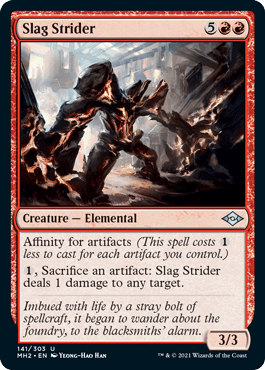


Modern Horizons II later revisited affinity with cards like Slag Strider, and introduced affinity for tokens in Junk Winder. In 2022 we got Urza, Chief Artificer with affinity for artifact creatures.
More affinity for X cards will probably come in later sets, and whenever Magic needs a design based on affinity.
What Is Affinity for Artifacts?
Affinity for artifacts is the most common type of affinity card. It makes the card cost one less to cast for each artifact permanent you control. Those artifacts can be lands, creatures, and noncreatures alike.
Does Affinity Reduce Mana Value?
No, the mana value of the spell is the same regardless of affinity. Myr Enforcer has a mana value of seven no matter how many artifacts you have or the number of mana spent to cast it.
Does Affinity Reduce Commander Tax?
Yes, affinity can be used to lower commander tax. Commander tax is an additional cost while affinity is a cost-reduction mechanic, so affinity undoes what commander tax does.
What if a Spell Has Multiple Instances of Affinity?
If a card has multiple instances of affinity then each instance further reduces the mana needed to cast the spell.
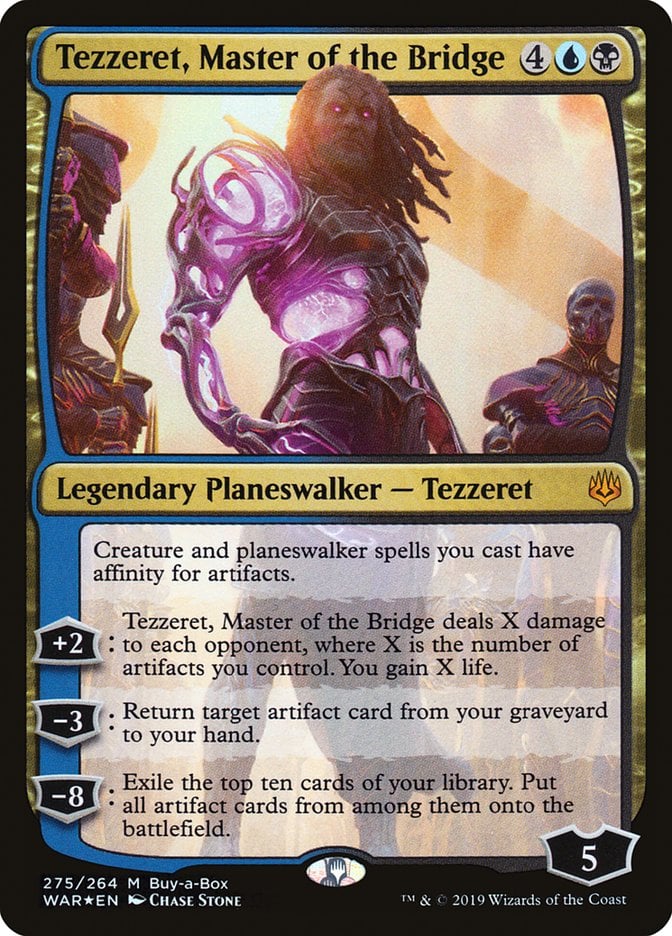
A card like Tezzeret, Master of the Bridge can give an extra instance of affinity to a card that already has one. Each artifact you control contributes twice to the cost reduction.
How Does Affinity Work with Nongeneric Mana?
Affinity only reduces the cost of generic mana needed to cast the spell. No matter how many artifacts you control, Thoughtcast costs at least one blue mana and Qumulox costs at least two blue.
Can Affinity Reduce Cost to 0?
Yes, it can. If a card only costs generic mana, like Spire Golem and Frogmite, you can play them for free if you have enough cost reduction.
Does Affinity Stack?
It does!
Some cards, like Mycosynth Golem and Tezzeret, Master of the Bridge, can give affinity to spells that already have affinity.
Do Artifact Lands Count for Affinity?
Yes. Artifact lands are typed as both artifacts and lands. If the spell has affinity for artifacts then you can use both your Tree of Tales and Darksteel Citadel as cost reduction and mana sources.
What if You Sacrifice an Artifact While Casting an Affinity for Artifacts Spell?
Once you cast an artifact spell the cost is considered based on the number of artifacts you had before casting the spell. All the artifacts you sacrificed to pay for the spell are counted, even if they’re sacrificed.
This question is extremely relevant now that Treasure tokens are everywhere because they can be considered for affinity and the mana they produce. I can cast Frogmite with just two Treasure tokens by sacrificing both.
How Many Types of Affinity Are There?
Most of the affinity cards are affinity for artifacts, but there’s also affinity for basic lands, affinity for tokens, and affinity for artifact creatures.
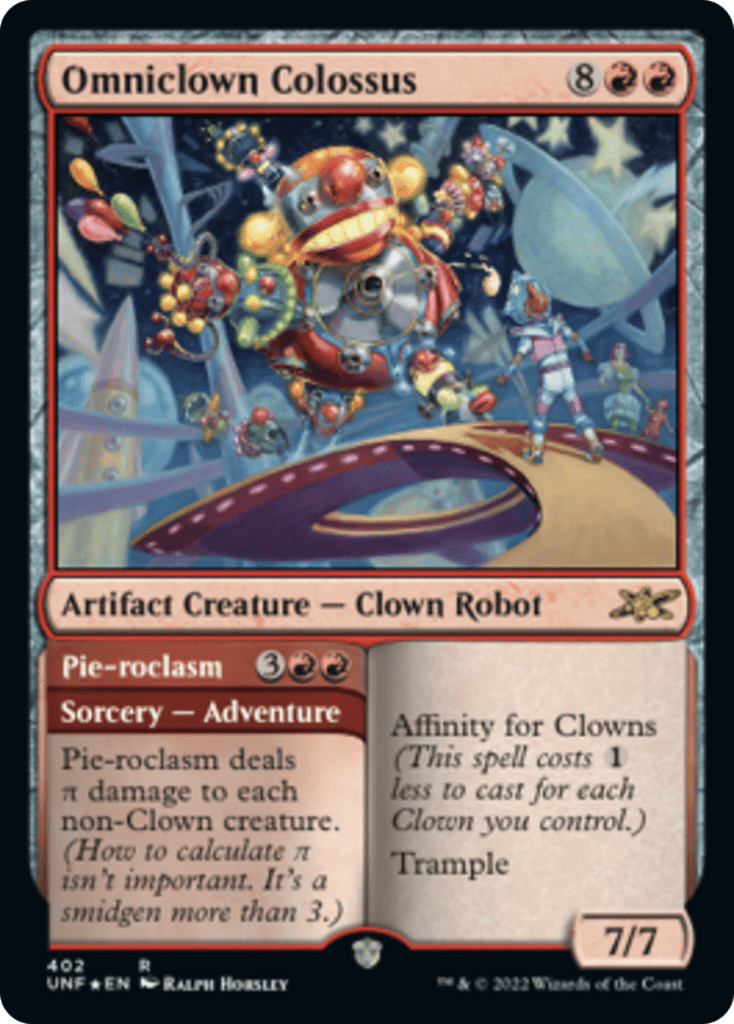
Unfinity also has affinity for clowns on Omniclown Colossus.
What Is “Anti-Affinity”?
Anti-affinity is a card that usually deals with artifacts or mass removal against artifacts.
Kataki, War's Wage and Gorilla Shaman are examples of some cards that deal with a lot of artifacts. There are sideboard cards relevant to the matchup in each format since affinity is a deck usually played in Pauper, Modern, and Legacy.
Is Affinity Dead in MTG?
Artifact decks are still strong, as are decks that require a critical mass of artifacts. But it’s not the powerhouse it was in the 2000s.
Cards like Emry, Lurker of the Loch and Urza, Lord High Artificer are still strong in artifact decks. Some cards with the affinity mechanic are played from time to time, but it’s not the original Myr Enforcer plus Frogmite plus artifact lands.
The delve mechanic has presented strong cheap threats to compete, like Gurmag Angler and Murktide Regent. The artifact hate has also become stronger and hurts affinity, as did the ban of Mox Opal.
What Is an Affinity Deck?
Affinity decks in Standard were built around the affinity mechanic. They'd play artifact lands, affinity cards like Myr Enforcer and Frogmite, and cards that had synergies with artifacts like Cranial Plating, Arcbound Ravager, and Lord of the Vault.
It’s usually “artifact matters” aggro decks that want a critical mass of artifacts on the battlefield. After the Scars of Mirrodin block introduced metalcraft, another artifact-related mechanic, the affinity decks started to add metalcraft cards like Mox Opal, Carapace Forger, Etched Champion, and Galvanic Blast.
It’s ironic that both affinity and metalcraft care about a critical mass of artifacts and that there are more metalcraft cards, but the deck is still referred to as an affinity deck.
How Do You Play Affinity Decks?
You usually play artifact lands and cheap 0- and 1-mana artifacts and dump your hand. This lets you cast big creatures like Myr Enforcer for cheap and refills your hand with cards like Thoughtcast for (ideally) one blue mana.
You can then equip Cranial Plating to a creature and give it +X/+0, then keep attacking. Evasive creatures like Signal Pest and Vault Skirge are important because you want to win quickly.
How Does Affinity Win in MTG?
Affinity is usually an aggressive deck fueled by cheap artifacts and artifact lands to get an upper hand on mana. When you can effectively cast 2/2s and 4/4s for free with Frogmite and Sojourner's Companion you can beat the heck of your opponent. Cards like Thoughtcast and Thought Courier let you draw two cards for as low as one mana.
How Do You Beat Affinity Decks?
“Anti-affinity” cards are key to beat affinity decks. You want cards that work as mass artifact destruction as cheaply as possible, so Farewell usually won’t do it at six mana. Forget Naturalize, you want to play something like Force of Vigor.
Gallery and List of Affinity Cards


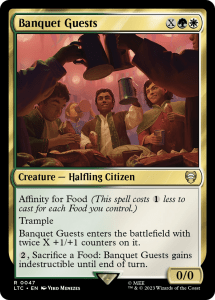
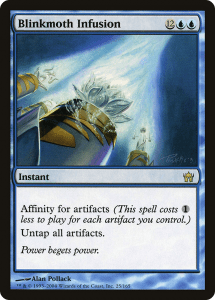


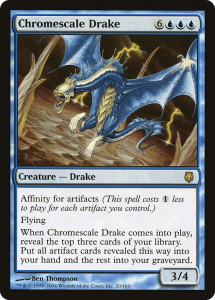

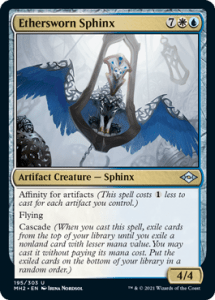
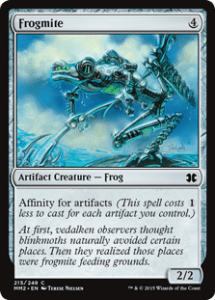
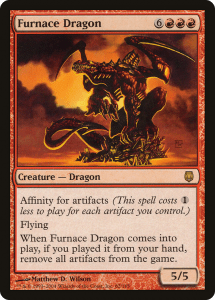
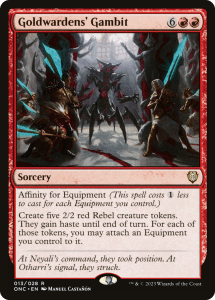
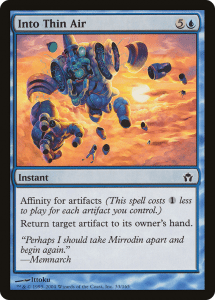
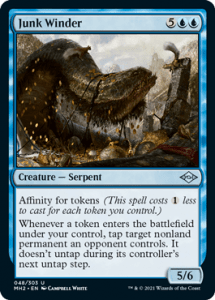

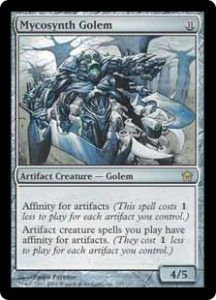


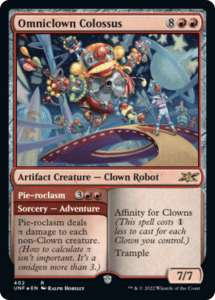


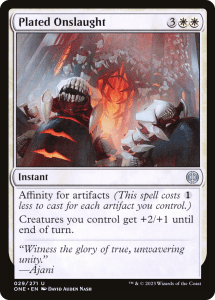
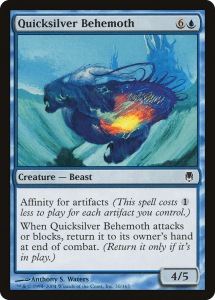

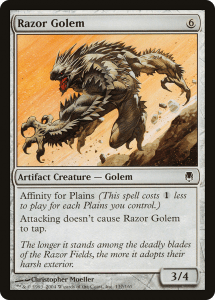
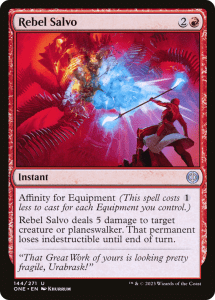
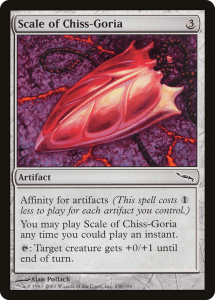
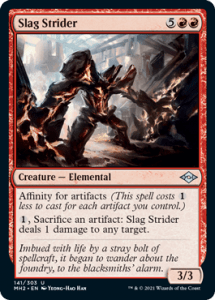
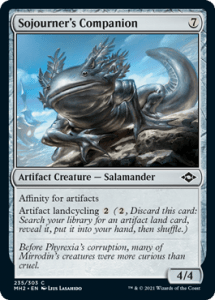
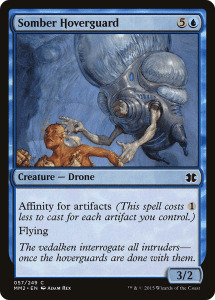





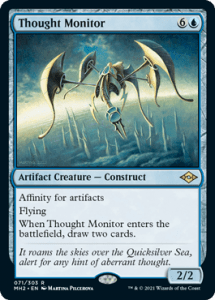
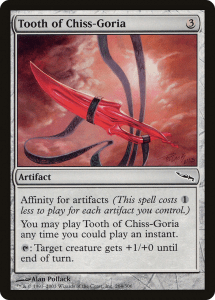
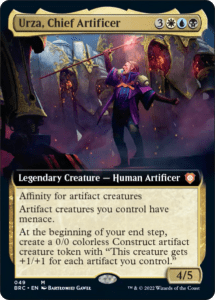
- Assert Authority
- Banish to Another Universe
- Banquet Guests
- Blinkmoth Infusion
- Broodstar
- Chiss-Goria, Forge Tyrant
- Chromescale Drake
- Dross Golem
- Ethersworn Sphinx
- Frogmite
- Furnace Dragon
- Goldwardens' Gambit
- Into Thin Air
- Junk Winder
- Lens Flare
- Mycosynth Golem
- Myr Enforcer
- Nahiri, Forged in Fury
- Omniclown Colossus
- Oxidda Finisher
- Oxidda Golem
- Plated Onslaught
- Quicksilver Behemoth
- Qumulox
- Razor Golem
- Rebel Salvo
- Scale of Chiss-Goria
- Slag Strider
- Sojourner's Companion
- Somber Hoverguard
- Spire Golem
- Steelfin Whale
- Tangle Golem
- Tezzeret, Master of the Bridge
- Thoughtcast
- Thought Monitor
- Tooth of Chiss-Goria
- Urza, Chief Artificer
Best Affinity Cards
Honorable Mentions
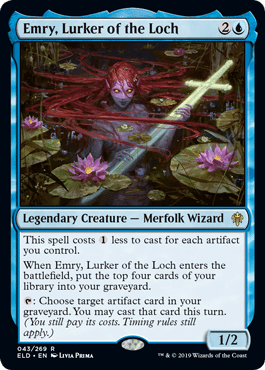

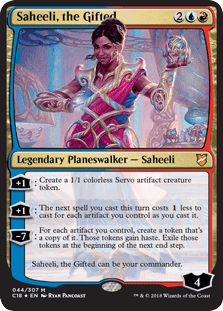
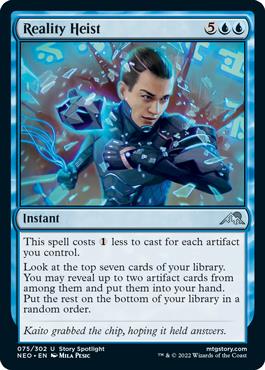
These cards all have the text “this spell costs less to cast for each artifact you control,” so they technically have affinity for artifacts even though the mechanic isn't keyworded.
Emry, Lurker of the Loch in particular is a highly played card in formats where it’s legal (Pioneer, Modern, Legacy, Commander). Gearseeker Serpent sees play in Pauper affinity sometimes.
#8. Frogmite

It’s a weak card by today’s standards, but Frogmite has seen a lot of play since it was created. At the end of the day it’s still only a 2/2, even if it’s cast for free.
#7. Myr Enforcer
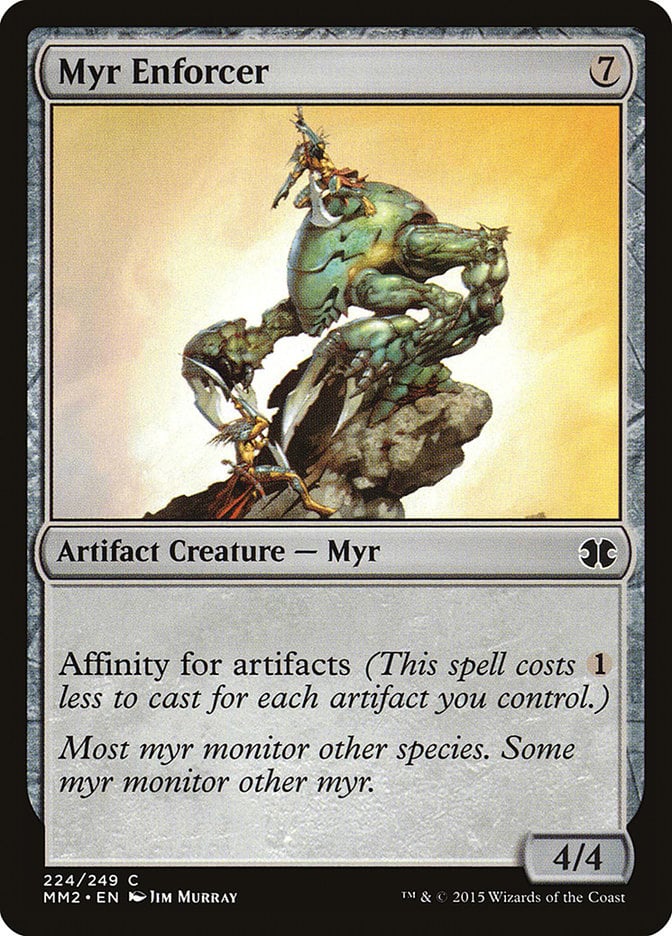
Myr Enforcer can be played usually as early as turn 3. It's a good beater that doesn’t die to cards like Lightning Bolt and Fatal Push.
#6. Urza, Chief Artificer

The newest card with the affinity mechanic has affinity for artifact creatures (that’s WotC making the mechanic safer). Urza, Chief Artificer is one of the commanders in The Brothers’ War, and it looks like a good artifact creature lord.
This can be even cast for cheaper than six mana. Each turn Urza gives you a “Karnstruct,” an artifact creature that gets +1/+1 for each artifact you control.
#5. Ethersworn Sphinx
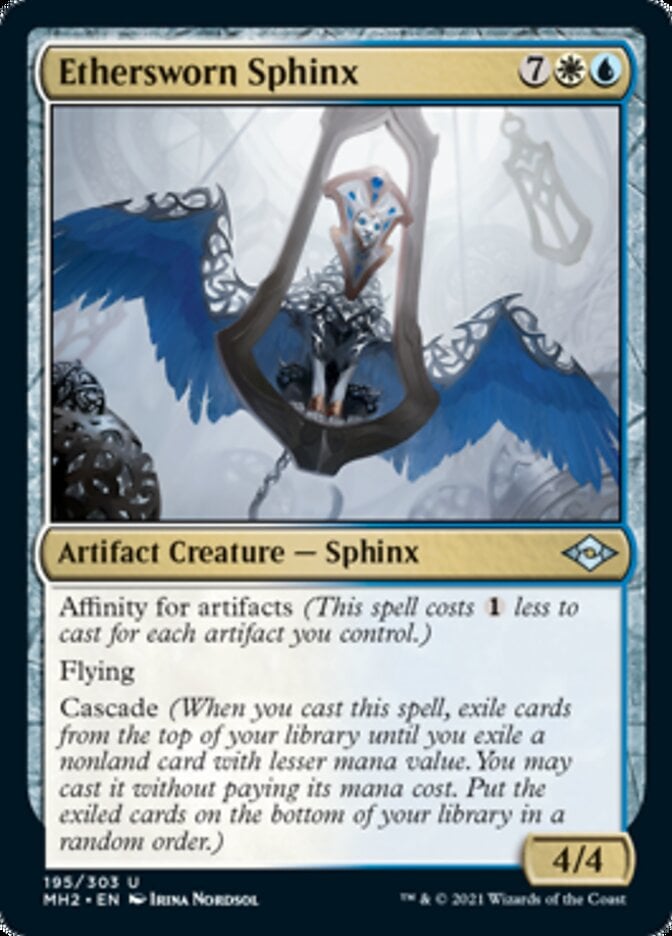
A 4/4 sphinx with flying is no joke, and with cascade you’re guaranteed to hit something extra. The cheaper you can cast the better, as usual with the affinity mechanic. Some Modern and Legacy decks can cast Ethersworn Sphinx in the three to four mana range, and it would be a very strong creature.
#4. Spire Golem
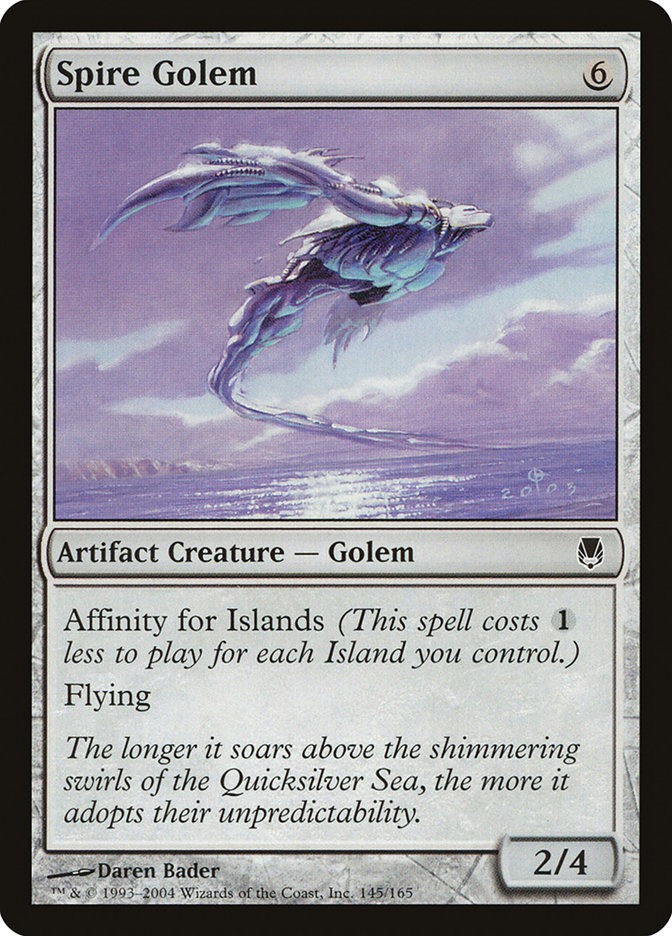
Another card that shines in the Pauper format, but Spire Golem has a different affinity for Islands. Turns out that a 2/4 for three blue mana is good in mono-blue tempo/faeries decks. It survives Lightning Bolt and blocks most threats.
#3. Sojourner’s Companion
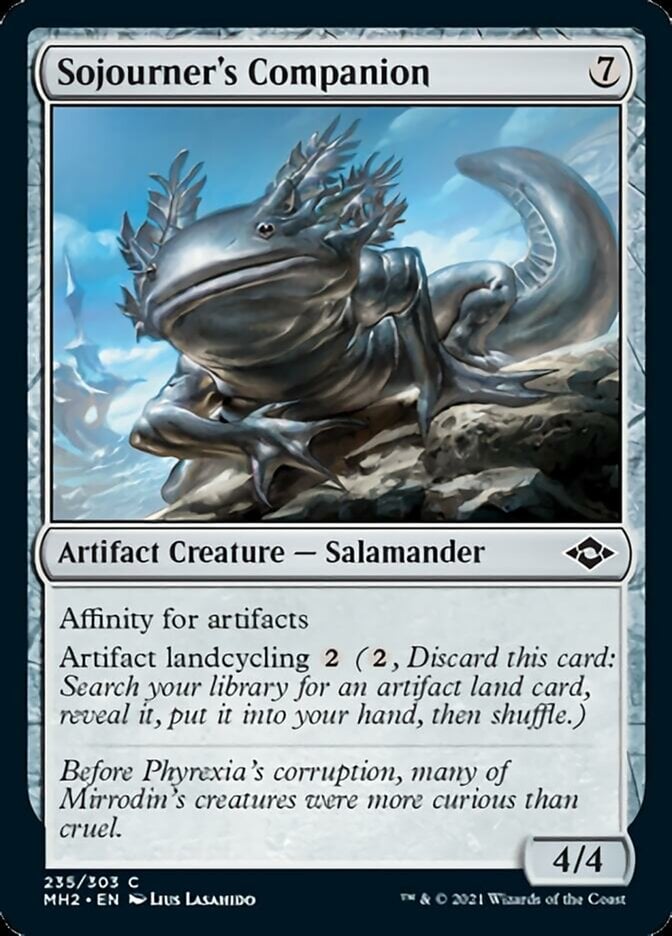
Sojourner's Companion is a strictly better Myr Enforcer, and it was banned in Pauper to weaken the affinity menace there. There’s now a limit on how many 4/4s you can play for free.
#2. Thought Monitor
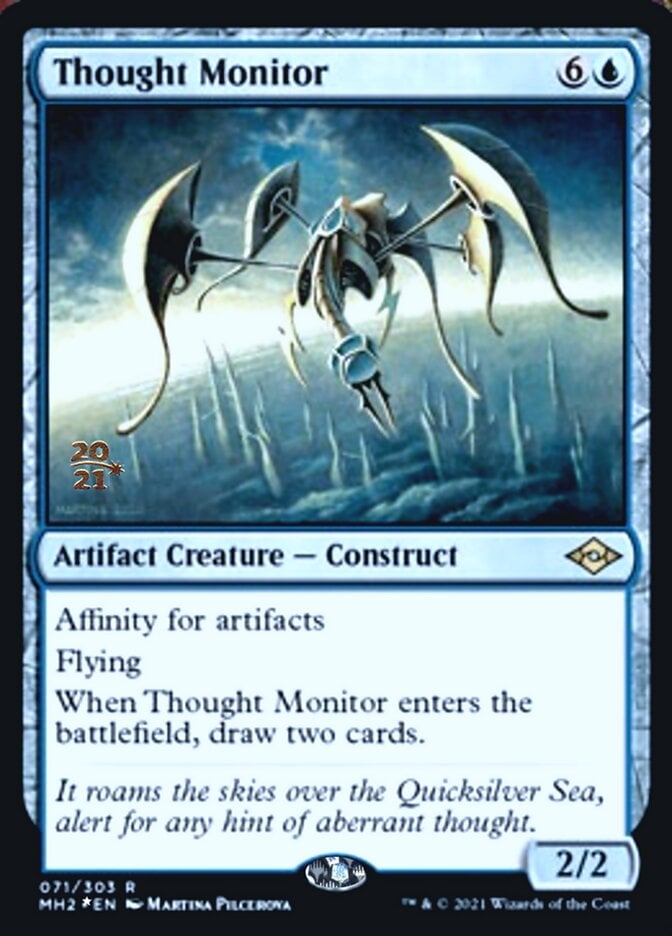
Thought Monitor is Mulldrifter, but potentially cheaper. It's good, but 3- to 5-drops need to do something better these days.
This is still nice for EDH because adding to the battlefield and drawing cards is always fine in a slower format where people are “wrathing” left and right. I’d play the Monitor whenever I could in an artifact/blink deck.
#1. Thoughtcast
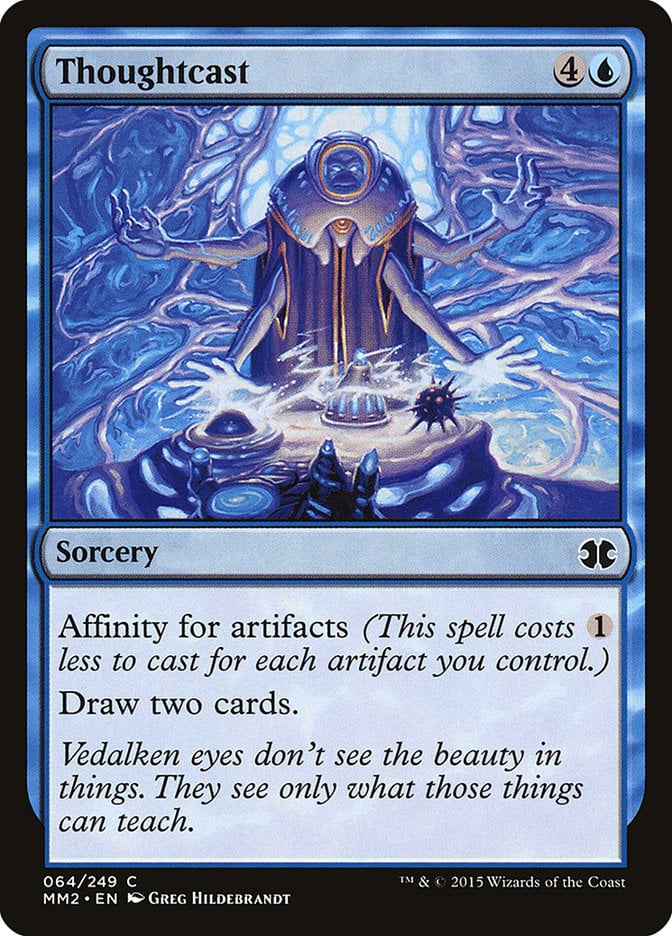
Drawing two cards usually costs three mana if it’s a sorcery like Divination and four mana if it’s an instant like Glimmer of Genius. The key with Thoughtcast is drawing two cards for one or two mana at most. That’s where it shines.
Decklist: Affinity in Pauper

Chromatic Star | Illustration by Alex Horley-Orlandelli
Creatures (8)
Gurmag Angler
Gearseeker Serpent
Kenku Artificer x2
Myr Enforcer x4
Instants (16)
Reckoner's Bargain x4
Metallic Rebuke x4
Galvanic Blast x4
Deadly Dispute x4
Sorceries (4)
Thoughtcast x4
Enchantment (1)
Artifacts (11)
Blood Fountain x3
Ichor Wellspring x4
Chromatic Star x4
Lands (20)
Swamp
Island
Great Furnace
Darksteel Citadel
Vault of Whispers x2
Seat of the Synod x2
Drossforge Bridge x4
Mistvault Bridge x4
Silverbluff Bridge x4
Sideboard (15)
Nihil Spellbomb
Makeshift Munitions
Unexpected Fangs x2
Krark-Clan Shaman x2
Devour Flesh x2
Red Elemental Blast x3
Blue Elemental Blast x4
I could post a Modern or Legacy decklist here, but affinity is the king of the Pauper format. It would be a disservice not to post a Pauper affinity deck, which has made the 5-0 Pauper league recently.
This is the classic affinity from the Mirrodin era, mixing the original artifact lands like Great Furnace and Seat of the Synod with the new ones like Drossforge Bridge. It plays like a midrange deck, earning a lot of card advantage by sacrificing Ichor Wellspring and Chromatic Star to Deadly Dispute and Reckoner's Bargain.
The creatures are big and synergize with artifacts and the graveyard, like Gurmag Angler, Myr Enforcer and Kenku Artificer. Thoughtcast refills your hard while Metallic Rebuke and Galvanic Blast keeps opponents’ plans at bay.
Wrap Up
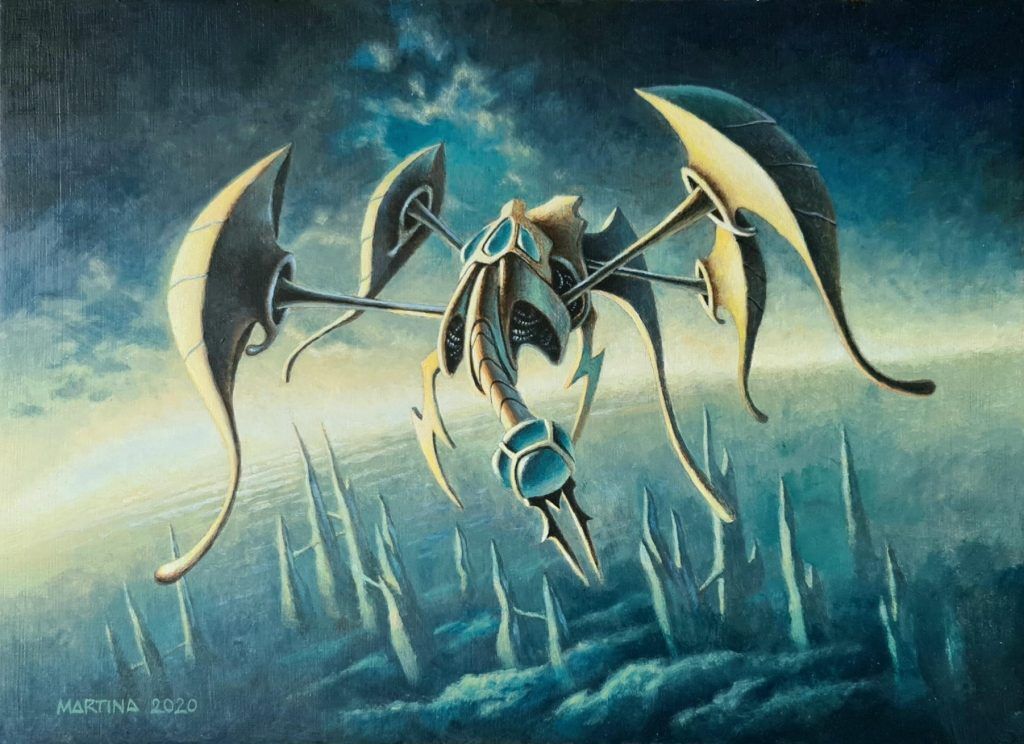
Thought Monitor (Modern Horizons II) | Illustration by Martina Pilcerova
The affinity mechanic teaches players a lot about the game, mainly its mana system. It’s one of those mechanics that WotC won’t bring back easily for a few reasons. It’s broken, or it isn’t interesting because extra care needs to be taken.
Almost every cost reduction ability is hard to balance, and similar stuff happens with delve on banned cards like Treasure Cruise and Dig Through Time. It’s still a cool and powerful mechanic, and there’ll probably be affinity for something. Urza from The Brothers’ War has it, and the next set is artifact themed.
What are your favorite affinity cards that you still play? Let me know in the comments below or in the Draftsim Discord.
Stay safe folks, and see you next time!
Follow Draftsim for awesome articles and set updates: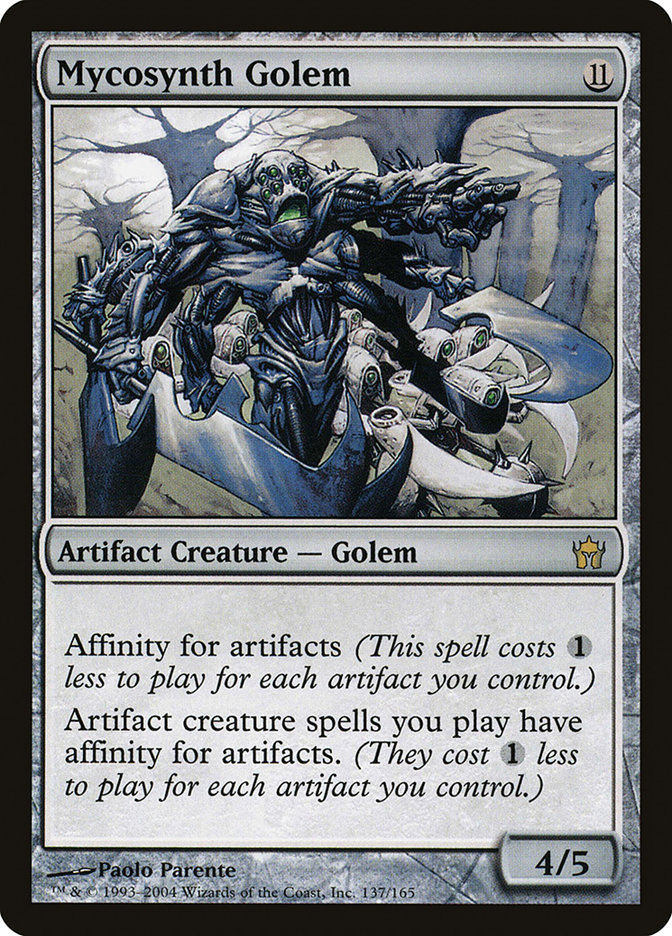
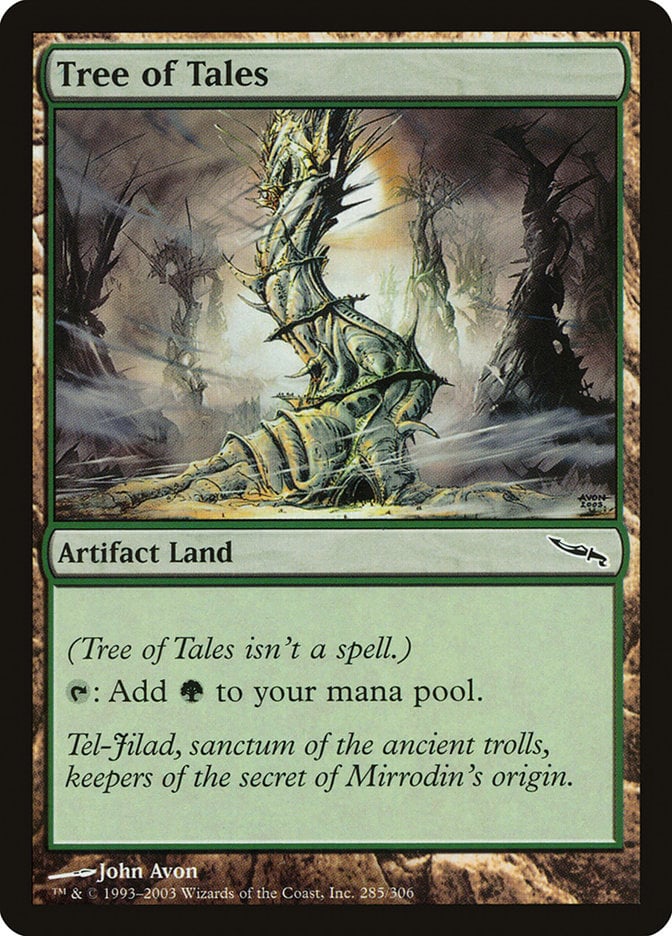

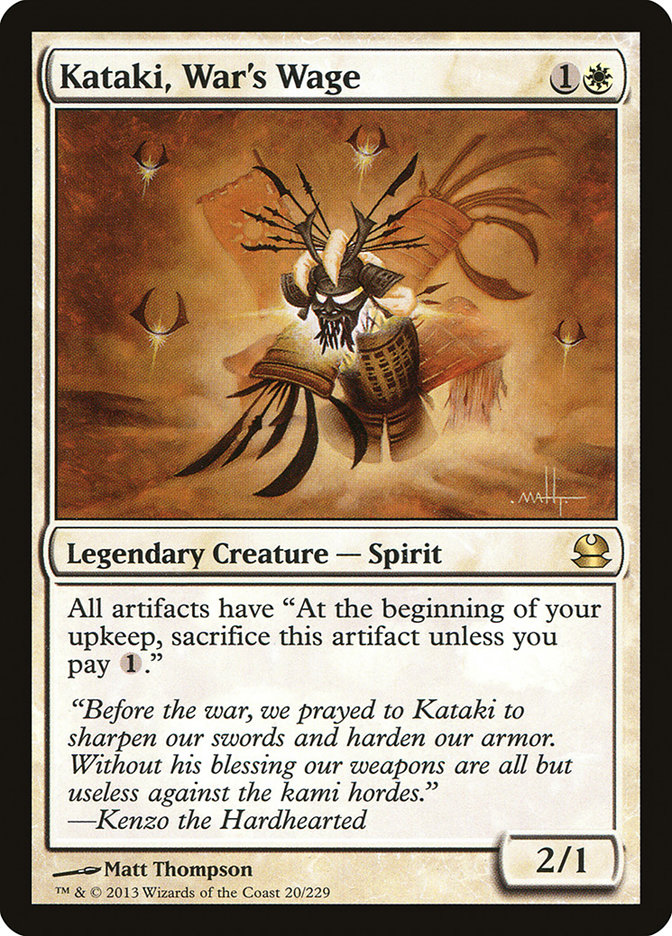



Add Comment